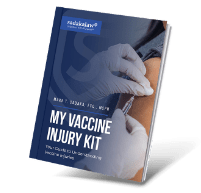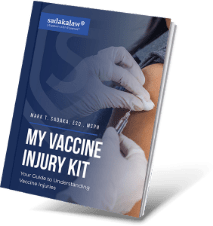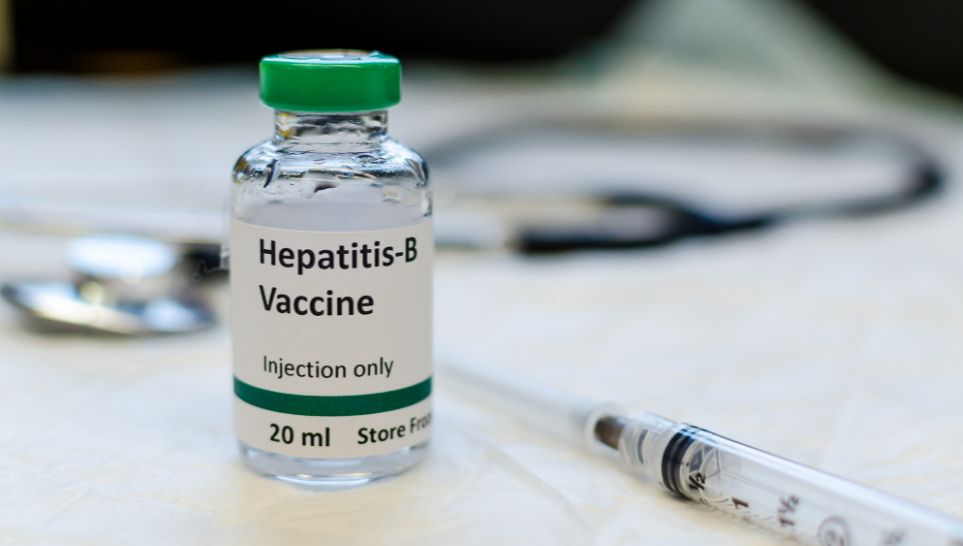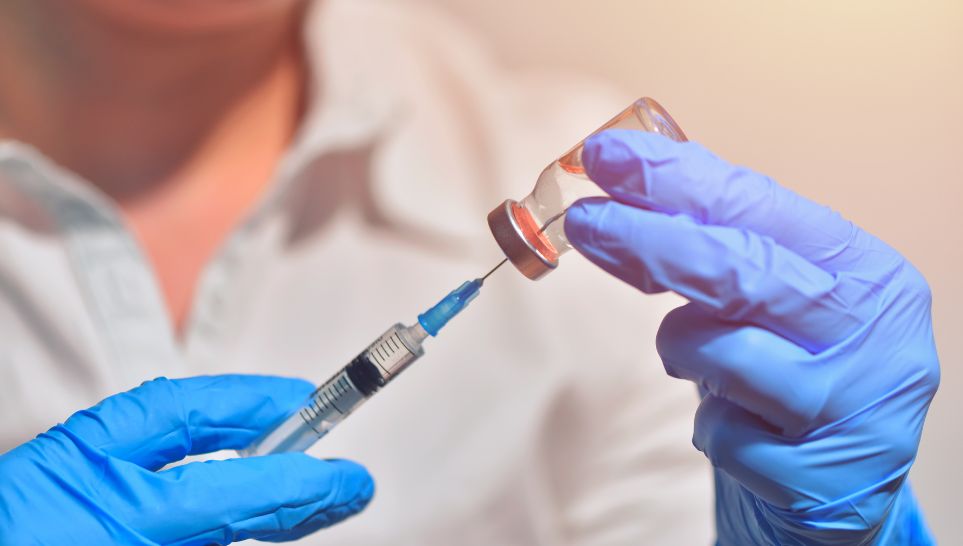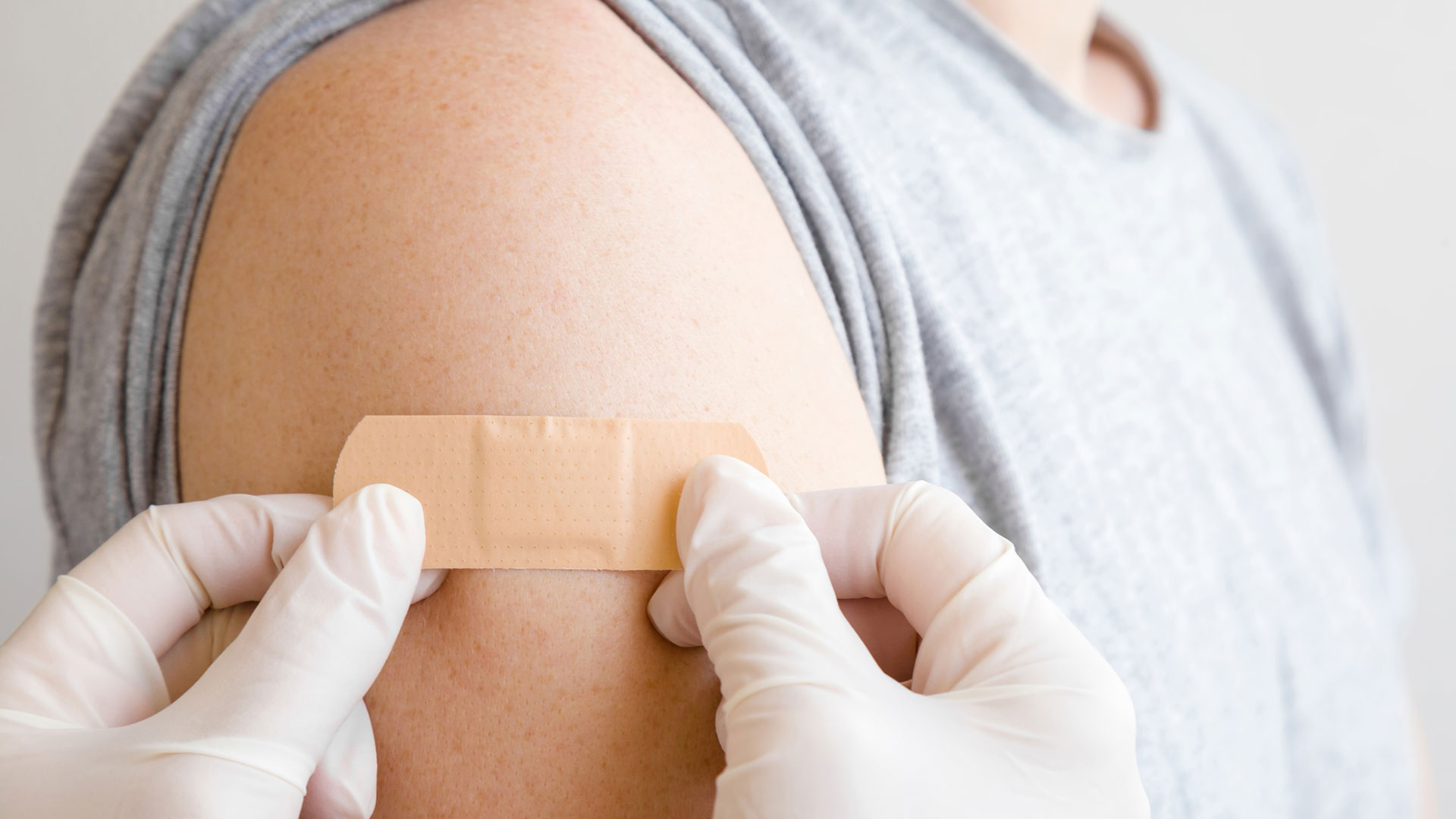
Vaccine shots aren’t pleasant and serious shoulder injuries happen when they are not given correctly. Without the right skills, a pharmacist, nurse, or tech can cause serious injury to your shoulder by injecting the vaccine in the wrong place, like too high in the upper arm or directly in the shoulder joint. Shoulder injuries after the influenza vaccination is by far the most common vaccine injury filed in the VICP.
Sadaka Law has actually settled a vaccine injury case where the vaccine administration caused a blood clot by forcing a vein closed when the fluid was injected. In that case, the pain our client experienced was intense resulting in swelling and damage to his joints, including his thumb. See more of our results here.
What’s the right way to administer a vaccine?
Most vaccines are given within the muscle or intramuscular. The muscle most commonly used is called the deltoid and it is located in your upper arm / shoulder. So an incorrect intramuscular injection is the cause of these intense adverse reactions and, sometimes, nerve damage.
The needle should usually be inserted at an angle of about 45 degrees and not too high in the shoulder. Sometimes vaccines can be injected in the front, back or side of the thigh. Intramuscular injections should never be in the buttock muscle because it can cause sciatic nerve injury. The sciatic nerve runs in the buttocks, which causes pain for some people if they are injected in that area. Avoiding that muscle is one way of preventing sciatic nerve injury.
Shoulder injury related to vaccine administration is the number 1 claim in the Vaccine Injury Compensation Program. In fact, the program has set up a special division for the processing of these types of injuries, like frozen shoulder. While these injuries are mostly not life threatening, they are most certainly life changing.
The CDC offers a full training course on how to give an IM injection in the deltoid. Proper training is the only way to avoid a vaccine administered incorrectly. Here is a video on how to avoid injecting the vaccine too high into the shoulder.
Intramuscular Injection Sites
The goal of intramuscular injection is to directly inject the vaccine into muscle. Vaccines are designed to travel through muscle tissue. If the vaccine is injected too low, it may not travel well into muscle tissue. If the vaccine is injected too high, it may cause shoulder pain that maybe a condition called shoulder injury related to vaccine administration or (SIRVA).
The most common intramuscular injection sites are:
Arm Deltoid Muscle
Intramuscular deltoid injection is by far the most common site of vaccine administration, including flu shots. It’s easy to reach and doesn’t require disrobing. However, if the pharmacist, nurse, or tech is standing too high above the person they can end up injecting the vaccine directly into the joint causing shoulder injuries, like bursitis, rotator cuff tears, pain, and joint damage.
Thigh Vastus Lateralis Muscle
The thigh muscle location is not a common choice for vaccination shots. But it is a popular choice for self-administering an injection.
Hip Ventrogluteal Muscle
This site is recommended for anyone above seven months old. That’s because it’s large and has fewer nerves and major blood vessels. Fewer nerves and vessels mean there’s a lower risk of injury during the injection.
Buttocks Dorsogluteal Muscles
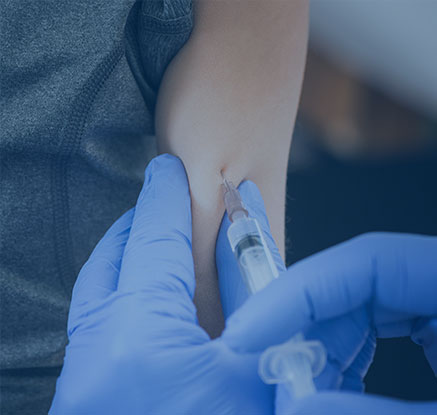
The muscles of the buttocks are no longer the preferred injection site due to the high risk of injuring the sciatic nerve. Damaging the nerve can cause reduced mobility of the leg.
What happens if you get a flu shot in the wrong spot?
Shoulder pain and a sore arm.
The preferred site for intramuscular injection is the deltoid muscle of the upper arm.
The National Institute of Health recommends vaccinating adults in the deltoid muscle in the arm. The Center for Disease Control (CDC) also recommends the deltoid arm muscle for anyone above three years old.
In 2012, the Institute of Medicine issued a report on vaccine injuries recognizing shoulder injury related to vaccine administration or SIRVA. In 2017 the CDC’s Vaccine Safety Datalink project did an analysis of reports of deltoid bursitis, an inflammation of the shoulder joint, after the seasonable influenza vaccine. The CDC reported that improper injection technique led to an additional 2.5 cases of deltoid bursitis per million doses administered per year! There were 2.9 million people who received the flu shot in the 2016-2017 flu season and there were 16 cases of bursitis reported within two days of vaccination. Read the original report here.
This report does not include cases of shoulder injury related to vaccine administration that started more than two days after vaccination or cases of other shoulder related dysfunction like brachial neuritis. This 16 within 2-days number likely SEVERELY underestimates the true risk of shoulder injury. One only needs to review the huge number of SIRVA claims pending in the Vaccine Injury Compensation Program to understand that the risk of shoulder injury related to vaccine administration is a serious public health concern.
So what happens when you get the flu shot in a buttock or hip instead of the shoulder? You may end up with serious injury that can prevent you from exercising, walking, and enjoying life. The buttocks is generally out of the question for most vaccine providers because the vaccine may travel into deeper tissue causing pain, swelling, nerve damage to your leg, thigh or lower back. Sciatica is an example of how incorrect injection site can cause permanent nerve damage affecting your mobility for life.
One of our clients sustained sciatic nerve injury as a result of incorrect intramuscular injection experienced shooting pains down his legs after receiving the vaccine. He has never fully recovered from this injury. Of course he had significant medical expenses associated with the care to fix problems related to incorrect injection site. If you have any questions about administering vaccines
While muscles outside of the shoulder maybe ideal because of their high blood supply, which boosts the vaccine’s effectiveness, the medical community generally regards using those sites as too high of a risk for serious injury.
The same mistake can lead to even graver consequences, such as an adverse reaction at the injection site. The reaction may occur because the subcutaneous fat has no blood flow, which causes the vaccine to stagnate in the fat and cause severe inflammation, or worse, necrosis. This would result in a severe wound at the injection site resulting in abscess formation and muscle loss.
Signs of incorrect muscular injection
A flu shot shoulder injury as a result of vaccine administration can be caused by many things, but the number 1 culprit is poor injection technique. The needle could enter the joint space of the shoulder or go too deep in the muscle causing inflammation and pain. This usually happens when the vaccine administrator is standing above the patient when administering the vaccine, like when the injector is standing and the patient is sitting in a chair.
There is no mistaken a flu shot injury after a few days. It usually begins with regular injection discomfort, but the discomfort never goes away and, often, gets worse. You should consult a doctor if the following symptoms persist:
- Tingling or numbness at the injection site
- Severe pain
- Continuous bleeding
- Redness or swelling at the injection point
- Abscess at the injection site
- Difficulty breathing, facial swelling, or other allergic reactions
- SIRVA (Shoulder Injury Related to Vaccine Administration)
What is SIRVA or incorrect intramuscular injection?
SIRVA is shoulder injury as a result of vaccine administration. It is a shoulder injury that occurs after a misplaced injection into the deltoid muscle and not related to the immune system. This is a known risk for all intramuscular vaccines, including the flu shot. The injury can lead to a short-term reduction in mobility, frozen shoulder, or permanent loss of range of motion in the affected arm.
SIRVA typically occurs when an injection is too high up in the deltoid muscle. When that happens, the needle penetrates the shoulder’s rotator cuff or the bursa (sac of lubricating fluid). Injecting either will cause severe and lasting pain. It could also lead to long-term loss of movement of the shoulder.
According to the Vaccine Adverse Event Reporting System (VAERS), cases of SIRVA are on the rise. For some patients, symptoms last from six months to several years, while 30% of patients require surgery.
What happens if a flu shot is given subcutaneously?
Accidental subcutaneous fat injections cannot get a vaccine dose into the bloodstream fast enough. That’s because there isn’t enough blood flow in the fatty layers to circulate the vaccine. Also, while in the fat layers, enzymes can begin denaturing the vaccine’s antigens, leading to a less potent dose and an episode of vaccine failure.
Another problem is fat layers do not contain the phagocytic or antigen-presenting cells for triggering an immune response. These factors are why healthcare experts recommend administering flu shots intramuscularly.
But according to the CDC, if there is an accidental subcutaneous administration of an intramuscular flu shot, it is best to simply repeat the injection. The second injection ensures the patient gets the right dose and reduces the risk of vaccine failure.
That said, aside from reduced effectiveness, subcutaneous injections, accidental or deliberate, come with the risk of abscesses and granulomas. Because of the health risks involved, it’s best to avoid injecting subcutaneously whenever possible.

Can I file a lawsuit if I was injected with a flu shot in the wrong spot?
Intramuscular injections can can cause untold pain and suffering. For example, patients with an injured shoulder may no longer be able to work, causing hardship for them and their family.
Fortunately, victims of shoulder injury related to vaccine administration can get financial compensation by filing a petition through the Vaccine Injury Compensation Program. Instead of filing a lawsuit, which costs more time and money, a claimant can seek restitution through the National Vaccine Injury Compensation Program (VICP).
From 1988 to 2020, the program has paid vaccine injury victims over $4 billion in compensation. But you can only file a petition for damages if the VICP covers the vaccine that caused the injury. The flu vaccine is a covered vaccine.
Best locations for vaccine injections
The medical community recommends that you can reduce the risk of a misplaced vaccine injury by injecting vaccines into a site with minimal risk of injury. Depending on the age of the patient and vaccine quantity, the optimal injection site could be the deltoid muscle or anterolateral thigh muscle.
Larger doses should go into the anterolateral thigh muscle, while smaller doses (under 1 milliliter) should go into the deltoid.
Also, if administering two vaccines at once, space them 1-inch apart. Doing so will prevent the vaccines from mixing and possibly causing an adverse reaction.
Aside from injecting the vaccine into the right location, the length of the needle is also important. If the needle isn’t long enough, it could end up injecting the vaccine subcutaneously.
For infants under 1-month-old, a 5/8-inch needle is ideal for an anterolateral thigh injection. For a 1 through 12-month old infant, a 1-inch needle is enough for an intramuscular injection. The same goes for adults that weigh under 150 pounds. An adult that weighs over 150 pounds may require a 1½-inch needle to get through the fat layers and into the muscle.
But the needle must also not be too long. If it is, it could damage blood vessels, nerves, or skeletal structures.
You do not have to deal with your shoulder injury alone
A shoulder injury related to vaccine administration can destroy your life. Living with limited range of motion and pain can prevent you from spending time with you children or grandchildren. To avoid complications, make sure a healthcare professional administers all your vaccinations.
If something goes wrong, don’t hesitate to seek damages through the Vaccine Injury Compensation Program. Call us at 1-800-810-3457. Sadaka Law is highly experienced vaccine injury lawyers and we can help guide you through this process for free.
